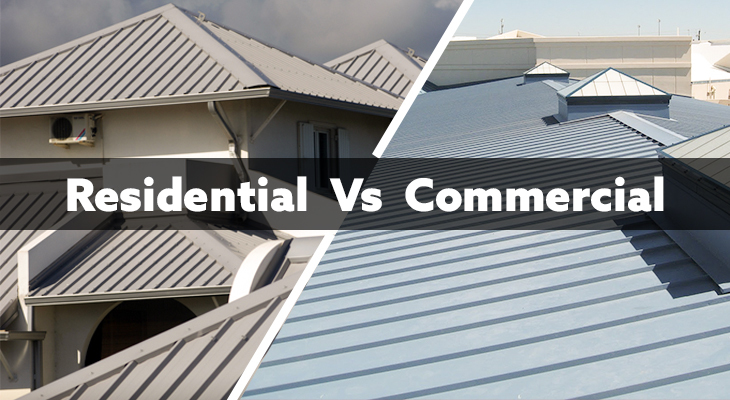
At first glance, all roofs may seem to be similar. Perhaps the only differences you might have noticed between various roofs is their colour and shape. However, you might be astonished to learn that the difference between your house’s roof and that of a nearby factory is beyond your imagination.
You might think this topic does not require much of your attention. But you will understand the essentiality of the matter when you need to request the services of roofing contractors this winter. Indeed, the damage done to your roof during Alberta’s harsh winter is no new story for the locals.
The constant expansion and contraction of the metal roofing resulting from sunny days and chilly nights cause the material to deteriorate in a matter of a few weeks. The latter causes leaks, which invite in every harsh weather elements’, ruining the bliss of cosiness provided by your heating system. However, before availing the services of any roofing contractor, you should understand the type of roofing services they provide.
Regardless of the type of roofing service you require, ensure that the roofing contractor is reliable and knows the difference between distinct roofing types.
In light of the discussion above, we shall devote today’s blog to educating our readers regarding the difference between the seemingly similar residential and commercial roofs.
The Difference Between Residential And Commercial Roofs
The differences between the two types of roofs arise as a result of the functions they perform and the harshness they have to withstand. One might argue that they both serve the same purpose of protecting the house’s interior from the weather elements and providing security against any invaders.
However, did you ever consider the fact that an industrial or a commercial setting is quite different from your typical dwelling? The interiors of many industrial buildings are often filled with fumes and chemicals that exfoliate the roof. Hence, industrial roofs not only have to withstand external elements but also have to endure the harshness of the chemicals within the building.
Let us discuss the factors responsible for the differences:
1. Cost
As you might have guessed, the biggest difference between the two roof types is the crafting and installation costs. Due to the difference in the size, material, layering, and installation time, the cost of commercial roofs is far greater than that of residential roofs.
2. Roof Area
Unlike average houses that stand on a few square metres, factories, warehouses, and other commercial buildings often occupy a relatively larger area. As a result, even their roofs cover a greater space. This difference paves the way for other differences like design, sturdiness, and the material used in its construction.
3. Roof Design
This difference is the most apparent between commercial and residential roofs. Due to the above-stated difference in size, commercial building roofs are relatively flat while those of residential dwellings are slanted. There is typically no slope in commercial roofs besides the slight slant required for water drainage. On the other hand, the steep slopes of house roofs are what sets them apart from other buildings.
4. Roofing Material
While there are many factors that determine the roof material type of any building, we will concentrate on the type of setting for which the roof is required. Residential awnings are often made of metal, wood, asphalt shingles, etc. Although these materials are built to withstand harsh weather conditions, they can not endure extreme pressure or harsh chemical fumes.
To overcome the internal and external harshnesses, industrial and commercial building roofs are constructed from galvanised steel, copper, aluminium, tin, and PVC.
5. Roofing Layers
In addition to the aforementioned differences, residential roofs consist primarily of just two layers. The upper protective layer is made out of metal or any other material, and the inner wooden layer is for insolation. Contrarily, commercial building roofs contain multiple layers. These layers often include insulation, reflective coating, decking, and a protective coating.
These materials make commercial building roofs sturdier and more long-lasting than residential dwelling roofs.
6. Repair And Maintenance Requirements
Lastly, the last most prominent difference between the two is their regularity of maintenance and repair requirements. Usually, periodic visual assessments of residential roofs are sufficient unless there is a leakage or any other issue. On the other hand, commercial building roofs require regular inspection and maintenance by a professional roofing service provider.
Stahl Roofing Is Well-Versed In Handling Both
Regardless of the type of building for which you require roofing services, Stahl Roof Systems only provides premier services at reasonable prices while using only premium grade roofing materials. Contact us to learn more.
